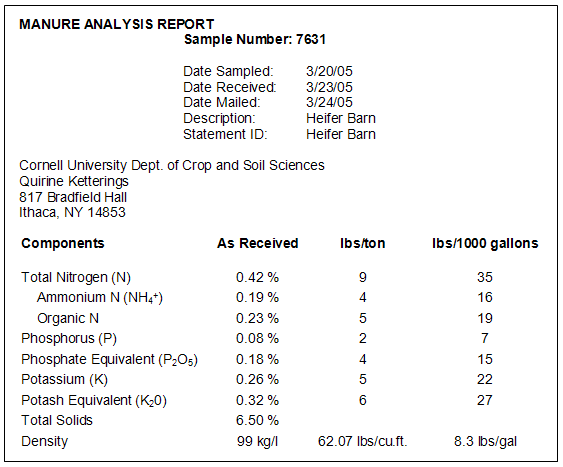Manure Analysis
Rapidly available N and more slowly released N appear in a standard manure analysis. The ammonium N on the manure analysis represents the "rapid N" (urine-N), while the organic N is equivalent to the "slow release N" (fecal-N). The lab determines total N by the Total Kjeldahl method and ammonium N by KCl extraction. Organic N is then calculated by difference (i.e. total N - ammonium N = organic N).
In addition, analyses for phosphorus, potassium, total solids, and density are also included. Phosphorus and potassium are presented in both elemental form (i.e. P and K) and fertilizer industry form (i.e. P2O5 and K2O). Use the following molecular weight conversions to switch between the two.
- 2.3 x Elemental P = Fertilizer Industry P2O5.
- 1.2 x Elemental K = Fertilizer Industry K2O.
Nutrient concentration of the manure is often reported in three ways:
- as a percentage,
- as lbs of nutrient per ton of manure, and
- as lbs of nutrient per 1000 gallons of manure.
The remaining information on the manure analysis is a measurement of the total solids, otherwise known as the dry matter content of the manure, as well as the manure density.
To read more on this subject: Nitrogen Guidelines for Field Crops in New York (section 3.3).
The next section focuses on ammonium N in manure.





